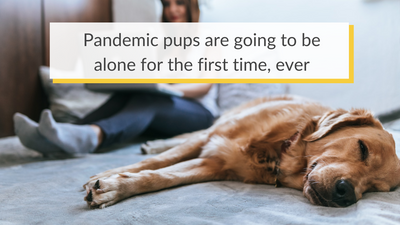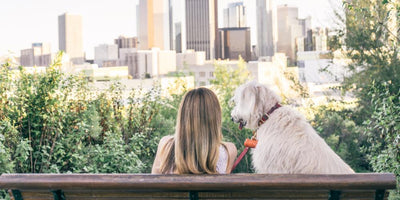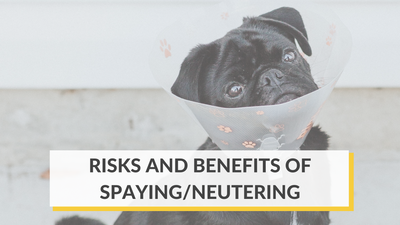Just as with the needs of a human baby, you need to make sure your home is dog-friendly for your furbaby. Your pup will need special measures put in place to make sure they avoid danger - and, sometimes, to keep your house safe from your pup! So, does your home pass the dog safety test? Here's a list of safety measures to ensure your dog's wellbeing.
Where’s your trash?
Dogs’ sensitive noses pick up on all the enticing smells inside a trash can, so either invest in a dog-friendly can with a latch that your pup can’t undo or keep your trash in a cabinet. Since you throw away more than meat scraps, such as hazardous materials and chemicals, it’s vital to keep your pup from having a solo romp through the trash.

Do you leave your bathroom door open?
We hope not! Bathrooms contain many hazards for dogs, such as bleach, air freshener, and various cleansers. Beyond the obvious, some dogs may even head in there for something to chew, especially if they have separation anxiety issues. Any fabric in your bathroom then becomes fair game for the anxious pup, even your towel, since it smells like you.
And even if you’re home, be sure to pop the toilet lid down so your dog can’t have a drink - it’s full of chemicals!

Are you “power smart”?
It can be hard to remember, but the safe way to plug your devices in is to run cords under furniture or to tape them against walls. Even when an electrical cord is unplugged, it still poses a danger to dogs, and can electrocute them when chewed. We’re all used to charging our devices all over the house, so be sure that if you are leaving the dog alone in the room, you move the cord to a safe location.

What’s in your bedroom?
The bedroom is one of the top places that pet owners leave their dogs when they’re out of the house, which also means that it’s a hot spot for dogs with separation anxiety. Absolutely anything in your room may be fair game for chewing or even destruction, so take a look around before you leave. One particular danger is mothballs. If you use them, be sure to get them out of your bedroom before your pup has access: they’re toxic to humans and pets alike.

Do you use fertilizer in your garden? How about insecticides, or mousetraps? These are all dangerous for dogs, and you’ll need to keep a close eye on your pup when they’re outside. Additionally, some plants and flowers - like ivy, daisies, and geraniums - are toxic to dogs. The ASPCA has a thorough list of pet-friendly plants, so check it out if you’re planning your garden or need to make changes!













